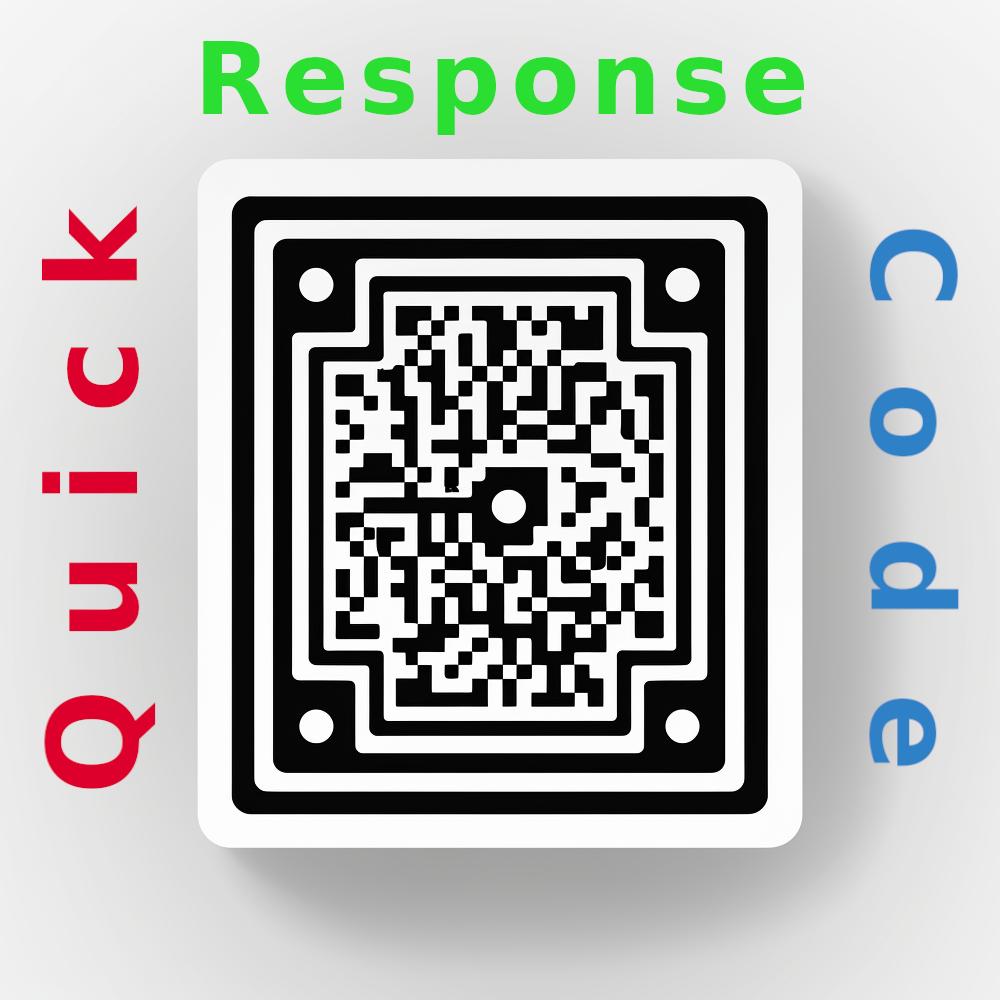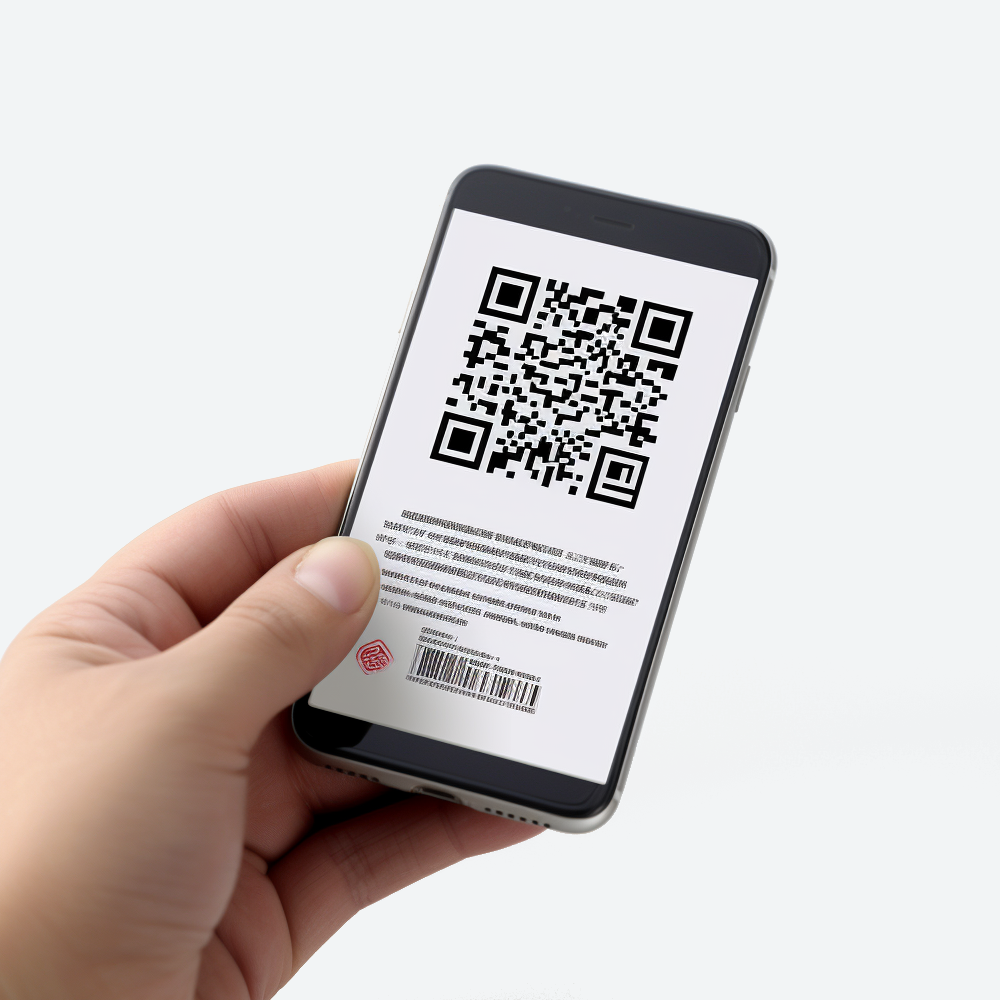


QR code stands for "Quick Response code." It's a two-dimensional barcode that stores data in a visually machine-readable format. QR codes are widely used in various applications, including marketing, product labeling, ticketing, contactless payments, and more. Here's a detailed explanation of what a QR code is and how it works:
1. Structure of a QR Code:
A QR code consists of black squares arranged on a white background, typically in a square grid pattern.
It can store a wide range of data types, including text, URLs, contact information, Wi-Fi network details, and more.
QR codes can vary in size and complexity, with larger codes capable of storing more data.
2. How QR Codes Work:
QR codes work by encoding data into a grid of black squares and white spaces. This encoding is done based on specific patterns and positioning within the QR code.
QR codes are designed to be easily scanned and decoded by devices like smartphones and dedicated QR code scanners.
3. Data Encoding:
QR codes use a combination of black squares in various arrangements to encode binary data (0s and 1s).
Data is encoded both horizontally and vertically within the code, providing redundancy and error correction capabilities. This allows QR codes to be scanned even if they are partially damaged or obscured.
4. Scanning and Decoding:
To use a QR code, you need a device equipped with a camera and QR code scanning software. Most smartphones have built-in QR code scanners as part of their camera apps.
When you point your device's camera at a QR code, the scanning software captures an image of the code.
The scanning software then processes the image to detect the position of the QR code and extract the encoded data.
Once the data is extracted, it is interpreted and presented to the user. For example, if the QR code contains a URL, the software may open a web browser to that URL.
5. Common Uses of QR Codes:
Website Links: QR codes can store URLs, allowing users to quickly access websites by scanning the code.
Contact Information: QR codes can encode contact details like names, phone numbers, and email addresses, making it easy to save them in a phone's address book.
Wi-Fi Network Setup: QR codes can store Wi-Fi network information, simplifying the process of connecting to a network.
Product Labeling: QR codes on product packaging can provide information about the product, such as ingredients, instructions, and expiration dates.
Marketing and Advertising: QR codes are used in marketing materials, posters, and advertisements to provide additional information, discounts, or promotions.
Ticketing and Boarding Passes: QR codes are used for mobile ticketing, allowing users to access events, flights, and public transportation.
Payment and Transactions: QR codes are used in contactless payment systems, allowing users to make payments by scanning a code with their smartphone.
6. Security and Privacy:
QR codes can contain links to websites, which may lead to potentially harmful or fraudulent content. Users should exercise caution when scanning QR codes from unknown or untrusted sources.
Some apps and devices offer security features to preview the URL or content associated with a QR code before opening it.
In summary, QR codes are two-dimensional barcodes that store data in a visually machine-readable format. They work by encoding data using specific patterns and positioning within the code, which can be scanned and decoded by devices like smartphones. QR codes have a wide range of applications and are commonly used for sharing URLs, contact information, Wi-Fi network details, and more.
QR codes are used in marketing and PR promotion in various creative ways to engage audiences, provide information, and drive user interaction. They offer a convenient and contactless means of delivering content and enhancing marketing campaigns. Here's how QR codes are used in marketing and PR promotion:
1. Access to Digital Content:
QR codes often link to digital content such as websites, landing pages, videos, and downloadable resources.
Marketers can use QR codes on print materials like posters, brochures, and flyers to direct viewers to online content related to a product, service, event, or campaign.
2. Contactless Payments:
QR codes are used in mobile payment systems like Apple Pay and Google Pay.
Businesses can integrate QR code payments into their marketing strategy to facilitate quick and contactless transactions.
3. Product Information:
QR codes on product packaging or labels can provide consumers with detailed product information, such as ingredients, usage instructions, and customer reviews.
This transparency can build trust and influence purchase decisions.
4. Event Promotion:
For events like conferences, trade shows, and concerts, QR codes on invitations or promotional materials can provide event details, schedules, and ticket purchasing options.
Attendees can also use QR codes for contactless check-ins.
5. Coupons and Discounts:
QR codes can lead to digital coupons, discounts, or promotional codes.
Marketers can use QR codes in print ads or direct mail campaigns to offer incentives for purchases or sign-ups.
6. Social Media Engagement:
QR codes can link to social media profiles, encouraging users to follow, like, or share content.
For example, a QR code on a business card can lead to the person's LinkedIn profile.
7. Lead Generation:
QR codes can link to sign-up forms, allowing marketers to collect customer information and generate leads.
This is commonly used for newsletters, loyalty programs, and contests.
8. App Downloads:
Marketers can use QR codes to facilitate app downloads from app stores.
Scanning the QR code directs users to the relevant app store page for quick installation.
9. Location-Based Marketing:
QR codes can trigger location-based marketing campaigns when scanned.
For instance, a user scanning a QR code near a store could receive special offers or information related to that location.
10. Feedback and Surveys:
- QR codes can lead to customer satisfaction surveys, feedback forms, or reviews.
- Marketers can gather valuable insights and feedback from customers.
11. Virtual Tours and Demonstrations:
- In the real estate and tourism industries, QR codes can link to virtual property tours or destination guides.
- Users can explore properties or locations without physical visits.
12. Content Personalization:
- QR codes can be customized to deliver personalized content based on user demographics, interests, or preferences.
- Marketers can create tailored experiences for different customer segments.
13. Time-Sensitive Promotions:
- Marketers can use QR codes for limited-time promotions, flash sales, or event registrations.
- The urgency of a time-sensitive offer can drive action.
14. Interactive Packaging:
- QR codes on product packaging can engage consumers with interactive experiences, such as games, quizzes, or augmented reality (AR) content.
15. Public Relations and Crisis Management:
- In PR, QR codes can be used to provide quick access to official statements, press releases, and crisis communication materials during emergencies.
16. Analytics and Tracking:
- Marketers can track QR code scans and gather data on user engagement and behavior.
- Analytics help measure the effectiveness of marketing campaigns and adjust strategies accordingly.
17. Accessibility: QR codes can enhance accessibility by providing information in various formats, such as text-to-speech for visually impaired users.
Incorporating QR codes into marketing and PR promotion offers opportunities for creativity, engagement, and data collection. However, it's essential to ensure that the QR code's destination provides value and relevance to the user to maximize its effectiveness.

We use cookies
We use cookies and other tracking technologies to improve your browsing experience on our website, to show you personalized content and targeted ads, to analyze our website traffic, and to understand where our visitors are coming from. Privacy Policy.